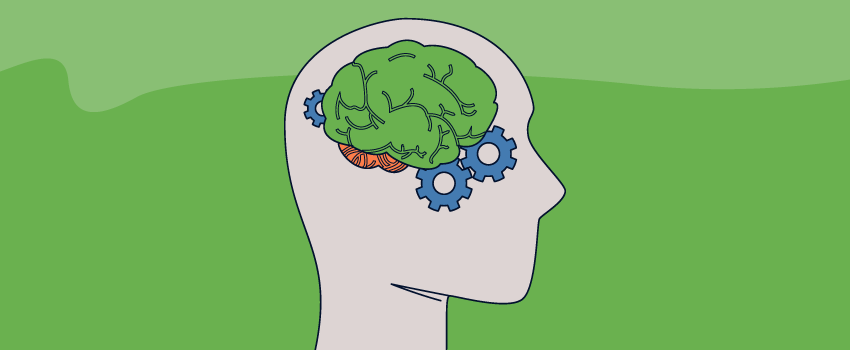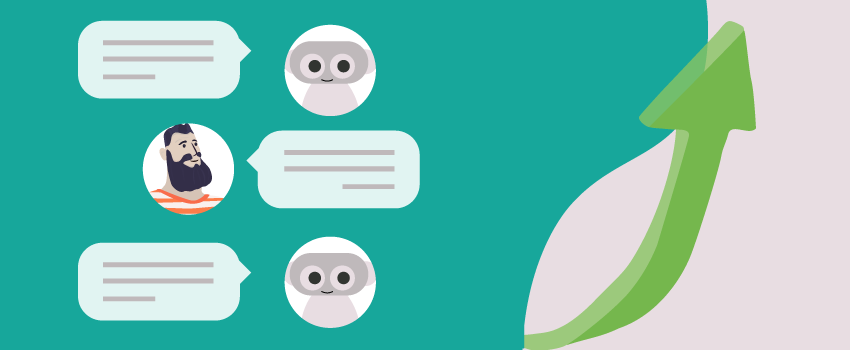ITSM Basics: The Top 13 “Approaches” Used by IT Service Desks

When looking to improve you IT service desk operations and results, there are a variety of best practice methodologies, frameworks, standards, and other approaches available. But which should you use? Or, asked differently, what approaches are used most?
The tail end of 2017 brought news of a new service management approach – VeriSM – and an upcoming 2018 update to ITIL , the popular IT service management (ITSM) best practice framework. But which are the most-used, ITSM-relevant best practice methodologies, frameworks, standards, and approaches?
The answer is of course: “It depends.” It will depend on a variety of factors such as: organizational size, geography, and industry (in a similar way to ITSM tool adoption). However, thanks to HDI research – namely the 2017 Technical Support Practices & Salary Report – we know which are most commonly used by North American service desks.
Please read on to find out the results.
The Top 13 Approaches Used by North American Service Desks
The top approaches are shown in the bar chart below – ranging from ITIL (at the top) to the Process Maturity Framework in 13th place.

Source: HDI, “2017 Technical Support Practices & Salary Report” (2017)
You’ve also got the HDI Support Center Standard in 2nd place, which isn’t unreasonable given that the survey was completed by many HDI members*. I’m sure a similar survey conducted by the Service Desk Institute (SDI), in the UK, would no doubt also see a high placing for its own Service Desk Standard.
It’s also worth noting that this survey was undertaken before VeriSM was announced to the ITSM world.
The Top 13 Approaches in More Detail
1. ITIL
The ITIL 2011 Glossary describes ITIL as:
“A set of best-practice publications for IT service management… ITIL gives guidance on the provision of quality IT services and the processes, functions and other capabilities needed to support them. The ITIL framework is based on a service lifecycle and consists of five lifecycle stages (service strategy, service design, service transition, service operation and continual service improvement), each of which has its own supporting publication. There is also a set of complementary ITIL publications providing guidance specific to industry sectors, organization types, operating models and technology architectures.” (Source: AXELOS)
Although the related Wikipedia entry is somewhat easier to consume:
“…a set of detailed practices for ITSM that focuses on aligning IT services with the needs of business.”
The core ITIL publications were last updated in 2011, with an updated version due this year. Although 2017 saw the publication of the very-practical ITIL Practitioner.
2. HDI Support Center Standard
“The HDI Support Center Standard is an aggregate of best practices and good practices found in various global frameworks, standards, and methodologies, representing the unique perspective of the support center (or service desk).” (Source: The HDI Support Center Standard)
This is a popular approach for North American service desks, bolstered by regional HDI chapters and events, but it has yet to make inroads globally. More information on HDI’s standard can be found here: http://www.thinkhdi.com/services/support-center-standard.aspx
3. Knowledge-Centered Service (KCS, previously known as Knowledge-Centered Support)
KCS is a knowledge management technique that’s described as:
“… a set of practices for creating and maintaining knowledge in knowledge-intensive environments. Unlike the traditional add-on process of knowledge engineering, KCS is an integral part of day-to-day operation. KCS becomes the way people solve problems and creates knowledge as a by-product of problem solving.” (Source: http://www.thekcsacademy.net/kcs/)
This is an incredibly successful approach to the tricky area of knowledge management (particularly service-desk knowledge capture) that will hopefully grow beyond its North American adoption.
4. Microsoft Operations Framework (MOF)
MOF is described as:
“… a free, downloadable framework that encompasses the entire IT service management lifecycle, providing organizations with the knowledge to seamlessly blend business and IT goals while establishing and implementing reliable, cost-effective IT services.”
MOF 4.0 was published in 2008, the year after ITIL v3 (which was later refreshed as ITIL 2011).
Thus, as with ITIL, the content was created before mainstream cloud adoption and, while very useful to Microsoft-based IT shops, readers/adopters should be very conscious of its 10-year age.
More information on MOF can be found here: https://technet.microsoft.com/en-us/solutionaccelerators/dd320379.aspx
5. ISO 9000
The ISO 9000 series of quality management systems standards are designed to help organizations ensure that they meet the needs of customers and other stakeholders while meeting statutory and regulatory requirements related to a product or service.
And the International Organization for Standardization states that ISO 9000 standards:
“… provide guidance and tools for companies and organizations who want to ensure that their products and services consistently meet customer’s requirements, and that quality is consistently improved.”
For many internal IT teams looking to assess their broader ITSM capabilities against an industry standard, ISO/IEC 2000 (#6 below) is considered the more appropriate standard.
More information on ISO 9000 can be found here: https://www.iso.org/iso-9001-quality-management.html
6. ISO/IEC 20000
ISO/IEC 20000 is the international standard for ITSM. It was created in 2005 and revised in 2011. It was originally based on ITIL’s ITSM best practice guidance, but it also works with MOF (#4 above) and COBIT (#12 below).
Unlike with ITIL, which is a framework not a standard, organizations can be compliant with ISO/IEC 20000.
More information on ISO/IEC 20000 can be found here: https://www.iso.org/standard/51986.html
7. Capability Maturity Model Integration (CMMI)
Based on the Process Maturity Framework (see #13 below), CMMI is a performance improvement model that assesses organizational processes, with “maturity” describing the level of formality and optimization of the processes.
Carnegie Mellon University, the CMMI patent registrant, provides oversight of this maturity model through the Software Engineering Institute (SEI).
CMMI will commonly be used by ITSM teams looking to improve their capabilities over time, with the framework used to assess the starting point (baseline) and the progress made against key ITSM processes.
More information on CMMI can be found here: http://cmmiinstitute.com/capability-maturity-model-integration
8. Lean
Lean is a systematic method for: waste minimization without sacrificing productivity.
When applied to IT (often called Lean IT), “Its central concern… is the elimination of waste, where waste is work that adds no value to a product or service.” (Source: Wikipedia)
Lean is becoming increasingly popular with IT professionals, often spoken about within the triumvirate of DevOps, Agile, and Lean.
More information on Lean can be found here: https://www.leanitassociation.com/ and I’ve written a helpful blog with Lean tips too.
9. Total Quality Management (TQM)
TQM is a management approach to long–term success through customer satisfaction that “…consists of organization-wide efforts to install and make permanent a climate in which an organization continuously improves its ability to deliver high-quality products and services to customers.” (Source: Wikipedia)
TQM was highly popular in the late 1980s and early 1990s, but has since seen ISO 9000, Lean, and Six Sigma as competing alternatives.
10. Six Sigma
Six Sigma is a set of tools and techniques for process improvement.
“It seeks to improve the quality of the output of a process by identifying and removing the causes of defects and minimizing variability in manufacturing and business processes.” (Source: Wikipedia)
Lean Six Sigma is a modified version that combines Lean and Six Sigma to eliminate waste (as per #8).
11. Kaizen
Kaizen is a Lean Six Sigma term (see #10) and a Japanese philosophy that focuses on continual improvement throughout all aspects of life. When applied to the workplace, Kaizen activities can improve every function of a business, from the IT service desk to sales operations, and from the CEO to a new employee on their first day.
Kaizen aims to eliminate “waste” in all systems of an organization through the improvement of standardized activities and processes. And is ultimately about bringing together a group of people who have an interest in having a particular problem solved, and getting them to solve that problem.
More information on Kaizen can be found in my blog here: https://www.joetheitguy.com/2018/01/10/use-kaizen-drive-service-improvements-part-1/
12. COBIT
COBIT (formerly also known as “Control Objectives for Information and Related Technologies,” a name that was dropped with version 5) is a good-practice framework for IT management and governance created by the international professional association ISACA.
To find out how COBIT can help your organization, I suggest you read my blog: COBIT 101 – So Much More than “Control Objectives for Information and Related Technologies.
13. Process Maturity Framework (PMF)
The PMF is another approach that can be used to assess the maturity of specific processes or the IT organization as a whole.
The PMF is very similar in structure, and a precursor, to CMMI (see #7). However, HDI trend statistics show that PMF is losing ground against the more modern CMMI.
So that’s the most popular frameworks, standards, methodologies, and approaches currently in use by North American IT service desks. Are there any approaches not in the HDI list that you would recommend? Or any that you would have expected to have placed higher? Please let me know in the comments.
*HDI survey information: “All survey responses were collected via a web-based survey, open from August to September 2017. The 2017 report compiles the responses from 596 technical support professionals in more than thirty vertical industries.”






